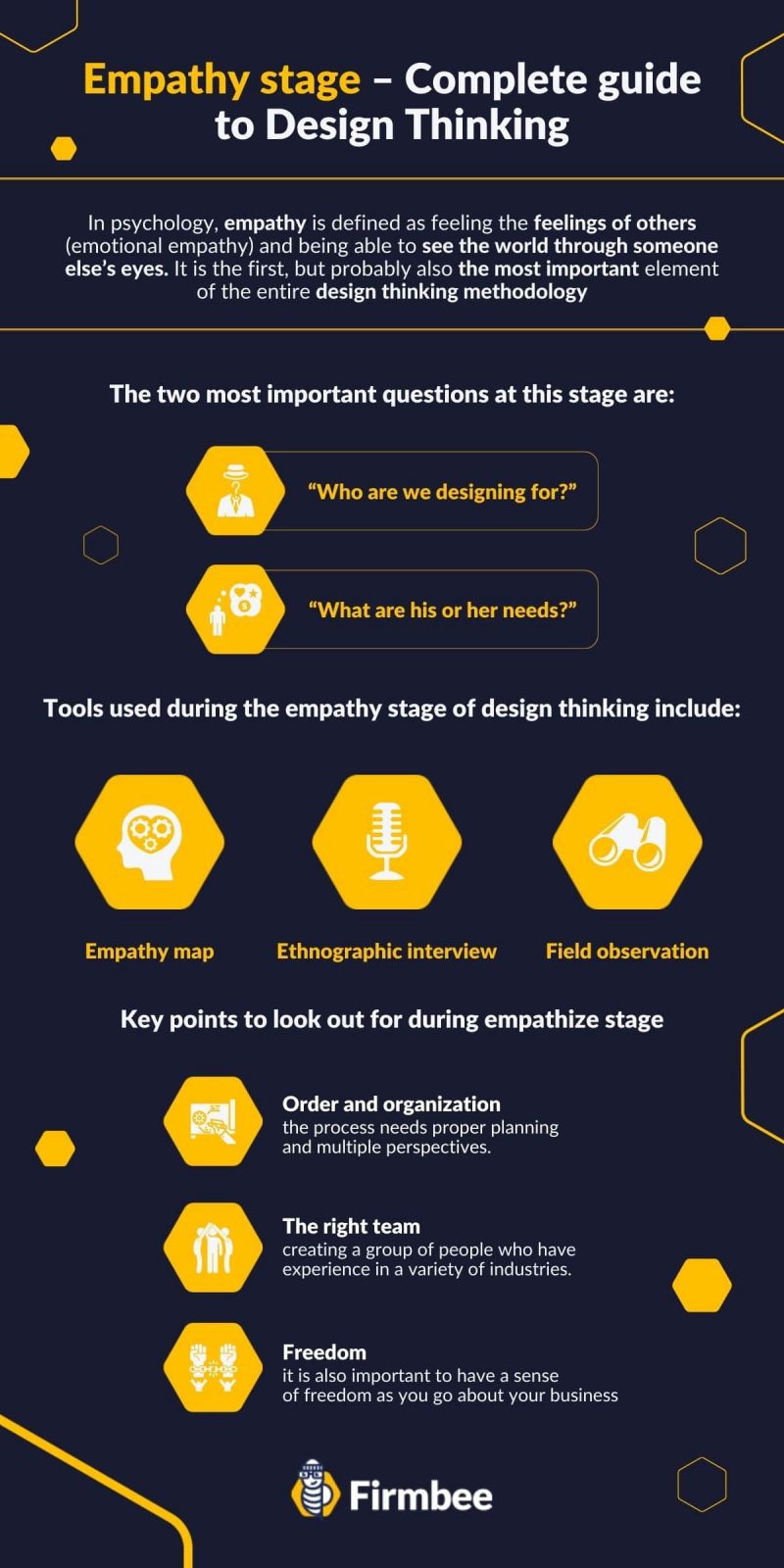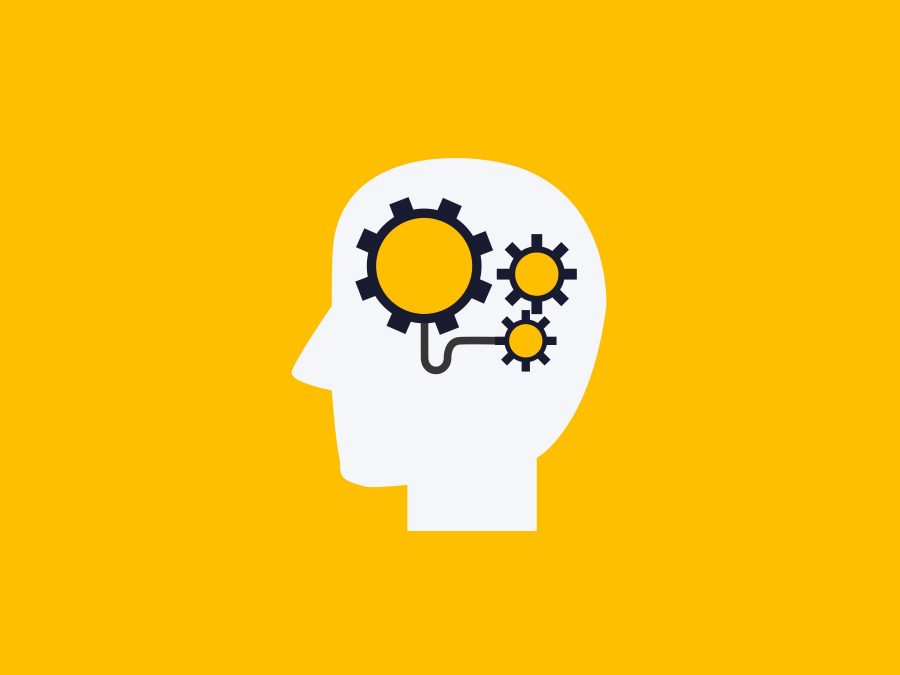We are faced with many choices in our daily lives as well as at work. Asking questions during our tasks and responsibilities allows us to find the right course of action. And so does empathizing – one of the stages of creating products and services using the design thinking method. Today, we’ll explain why the empathy stage in design thinking is so important.
Empathy stage – table of contents:
- Design thinking
- Empathy stage in design thinking
- Tools used in the empathy stage
- Key points to look out for during empathize stage
Design thinking
Design thinking is an approach to creating newpw products and services based on a deep understanding of a problem and needs users face. It consists of 5 stages:
- Empathize
- Define the problem
- Generate ideas
- Build prototype
- Test
Later, if the project passes testing, all that is left is to release it to the market as one of our products.
Empathy stage in design thinking
In psychology, empathy is defined as feeling the feelings of others (emotional empathy) and being able to see the world through someone else’s eyes. It is the first, but probably also the most important element of the entire design thinking methodology.
During the initial research, the whole team tries to go through the journey of their customers and see what they find troublesome. The task is to “become the customer/user“, analyze the problem helpful to visualize the collected suggestions. The two most important questions at this stage are:
- “Who are we designing for?”
- “What are his or her needs?”
Simply seeing the user’s needs isn’t enough, however – you also need to empathize with the user. This way we become curious about his experiences and thoughts.
It is important to set a research schedule, and each researcher should feel the support of the others and know his or her role in the team.

Tools used in the empathy stage
The most significant thing in research is to reveal your intentions as little as possible, because people tend to avoid critical comments. Therefore, a simple survey or interview, will not work with this methodology. Tools used during the empathy stage of design thinking include:
- Empathy map
- Ethnographic interview
- Field observation
The empathy map makes it possible to systematize the collected information and to see which aspects should be revisited if the selected material is not comprehensive enough. A visualization of the collected propositions is definitely helpful in this case.
Each interview should be conducted carefully. Doubt should not arise during the interview and the answers shouldn’t be too suggestible. Prepared well in advance, the interview needs proper recording so that all reactions and emotions evoked during the interview get collected and saved as data.
The observation should be conducted in a way that is almost imperceptible to the user. It is significant that he feels comfortable in the given environment and does not change anything while carrying out his daily activities. This helps in learning more about his world and the issues he encounters along the way.
Key points to look out for during empathize stage
No matter what’s your mode of work there are a few important measures to pay attention to:
- Order and organization – the process needs proper planning and multiple perspectives.
- The right team – creating a group of people who have experience in a variety of industries. This way they can create ideas based on their knowledge and experiences.
- Freedom – it is also important to have a sense of freedom as you go about your business. You should not keep your ideas to a minimum, the more creative you are the more chance you have of creating an original prototype.
We must remember that empathy is a very individual matter. Most of our actions before taking require planning for their right coordination. It is essential to feel the emotions and problems of the future users and customers. Engaging in this and subsequent stages of design thinking will make the final prototype attractive and above all – meet the requirements of the future customer.
Do you want to know: What does a UX designer do? Read our article.
If you like our content, join our busy bees community on Facebook and Twitter.
Author: Zofia Lipska
With over 10 years of experience in digital marketing, Sophia not only knows the rules of this industry but above all knows how to break them in order to achieve outstanding and creative results.
The most important questions
-
What is empathy in the design thinking methodology?
In a nutshell, empathy is a cognitive process that allows us to understand the user's needs and difficulties. At this stage, they are helpful as they prove to be valuable data about the users, their lifestyle, character or attitude towards our service or product.
-
Is the empathize stage an important element in design thinking?
Yes, although it is overlooked by many research teams from different companies, it is not only the first but also the most essential stage of the entire research process.


















